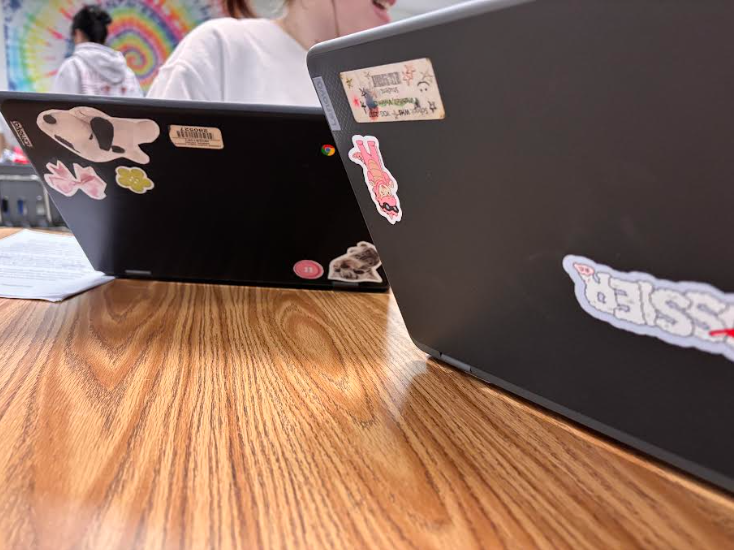When you think about school, you might picture a typical classroom with textbooks, lined paper for notes, and some yellow pencils for students to write with. But in more recent years, this has really changed, as almost all public schools across the country use modern technology in some capacity. The core structure of education might be the same as the days of the Washington administration, but now modern technology is giving schools a much needed update. According to the School of Education at American University, “The educational technology market is projected to expand to $342 billion by 2025, according to the World Economic Forum.” Northern Virginia and particularly Loudoun County, have been hard at work to modernize education.
Loudoun introduced Chromebooks in 2019 for grades 4th to 12th. According to Woodgrove art teacher Shawn Grove, “It kicked into hard gear during Covid in 2020 to make sure everyone was connected [for Virtual Learning].” Starting in the 2021-22 school year, the Chromebooks were almost inseparable from the classroom learning environment.
Many benefits have come from Chromebooks, as an article from Purdue University News stated on technology’s growth in schools. “Opportunities for communication and collaboration have also been expanded by technology. Traditionally, classrooms have been relatively isolated, and collaboration has been limited to other students in the same classroom or building. Today, technology enables forms of communication and collaboration [unlike] in the past.” Woodgrove teacher Tiffany Dillon said on the same subject, “[It’s] giving students the opportunity to engage with one another away from the screen and in the screen to more versatile ways of learning.”
Despite technology’s benefits in the classroom, it also comes with its downsides. Many have said that kids are spending a lot of time already on screens, whether watching their phone or playing video games on their TV. This sparks the debate of whether kids should really be on a computer for eight hours every day. The concern is pretty reasonable, as a study by the American Academy of Child Adolescent Psychiatry (AACAP) found that kids and teens spend on average six to nine hours a day on a phone or other screens. Most schools, including Loudoun County Public Schools, have an eight hour school day, and when all classes use chromebooks, to some extent, there will likely be problems. Aside from the concerns over screen time on chromebooks, there is the sudden rise of AI as a tool to help people, and it is spilling over into education. As reported by CBS News, some school districts in New Jersey and Georgia are beginning to implement AI into their learning curriculum to help students. However, many see it as a way to cheat on assignments and on tests. Loudoun County, along with many other public school systems, have banned/blocked AI programs on Chromebooks and from being used in classrooms due to the risk of cheating. Grove has his own concern as for the art program, stating, “I think problem solving and working through particular scenarios to create art is really who we are as humans, and [AI] is taking away the human aspects of what art truly is.” There have been more calls of concern as time goes on, but many people are seeing technology more positively. As Dillon pointed out, “There’s positives and negatives, just like any change, so I think you have to be able to incorporate technology and also be able to do activities without technology involved.”
It is hard to say for certain how technology will impact education in the future. Many people will have their doubts on it at times, and just as many will champion it, but it is still a long-term process. Only time will tell what the future of tech will look like in the classroom.



